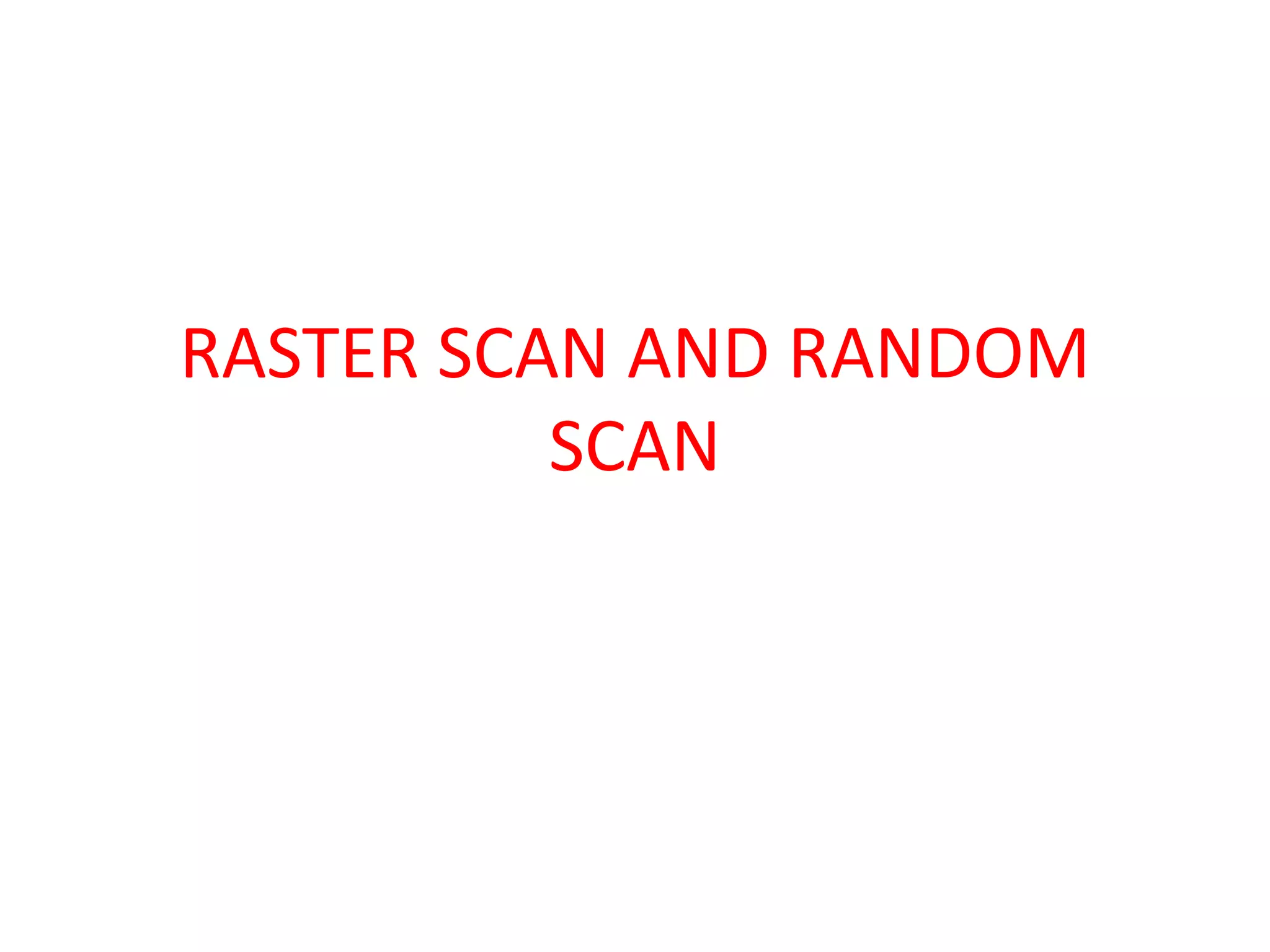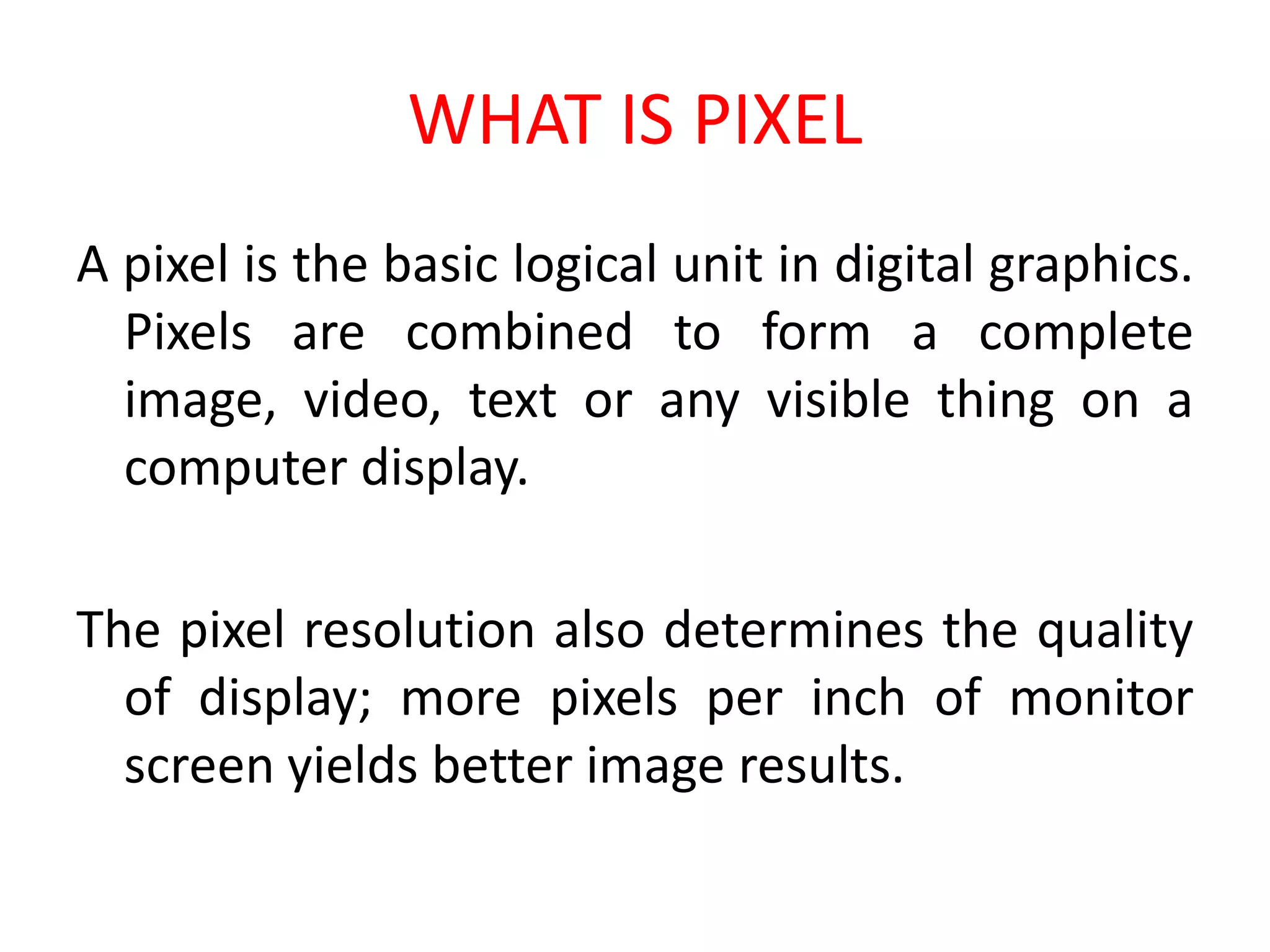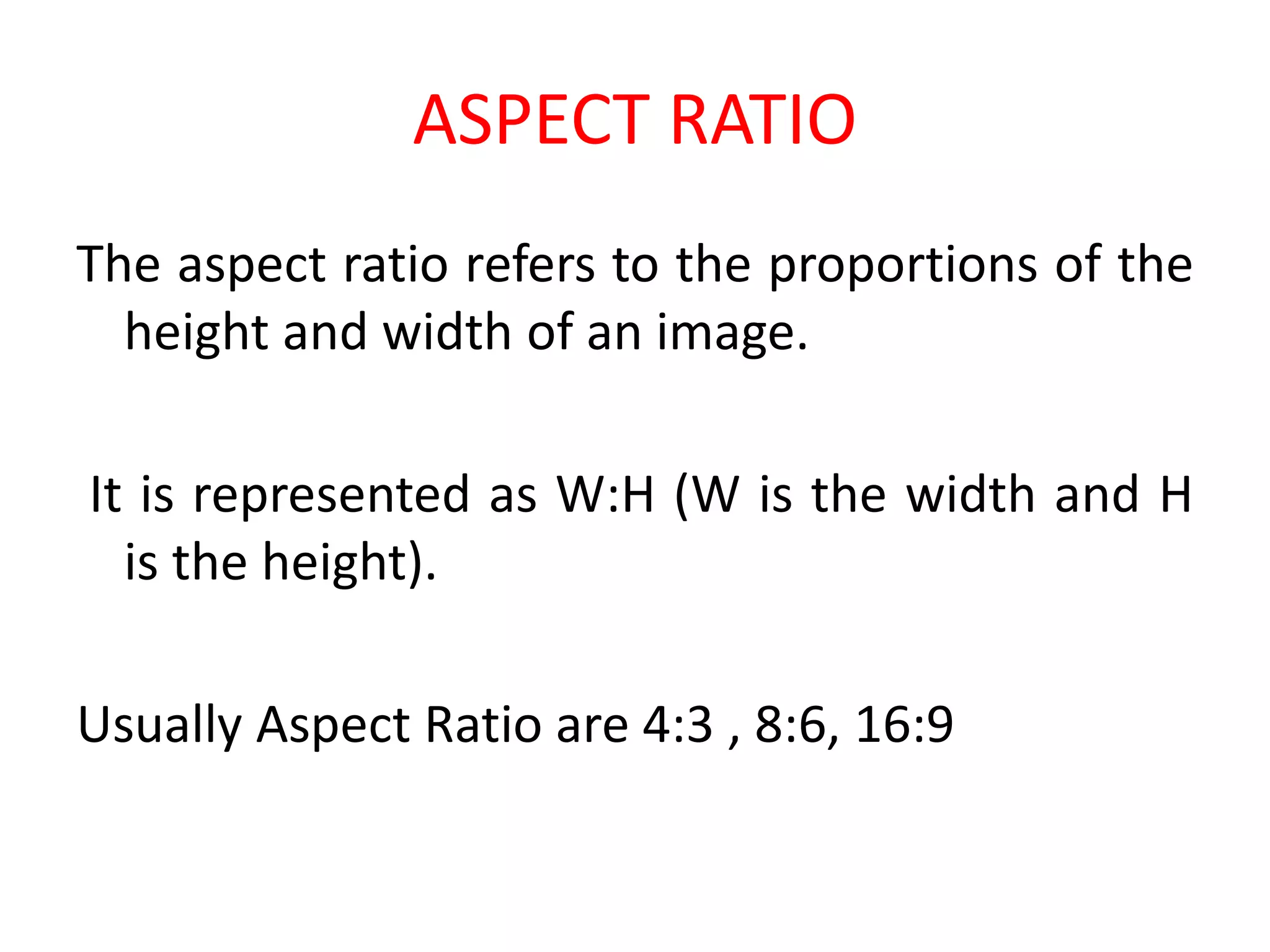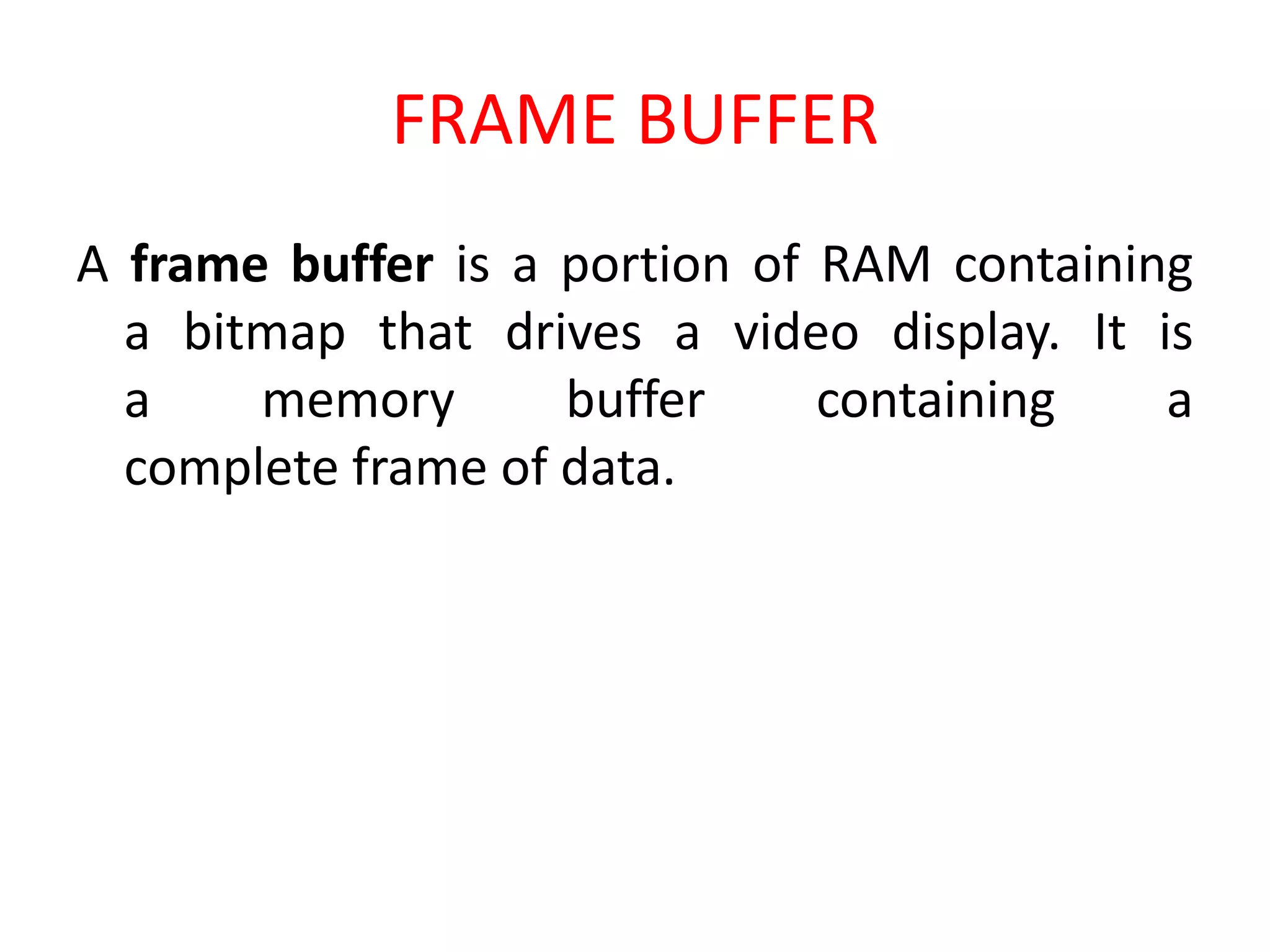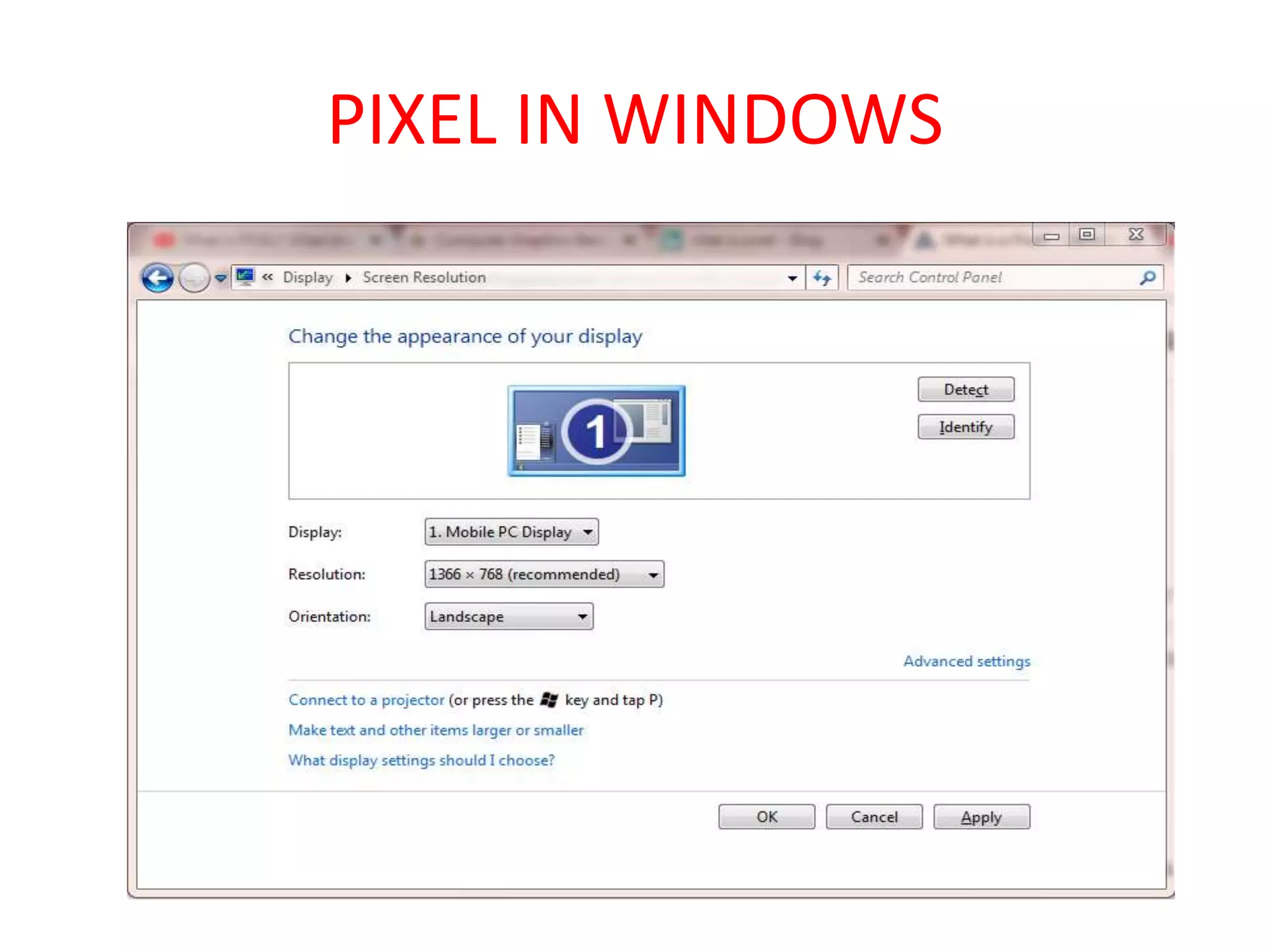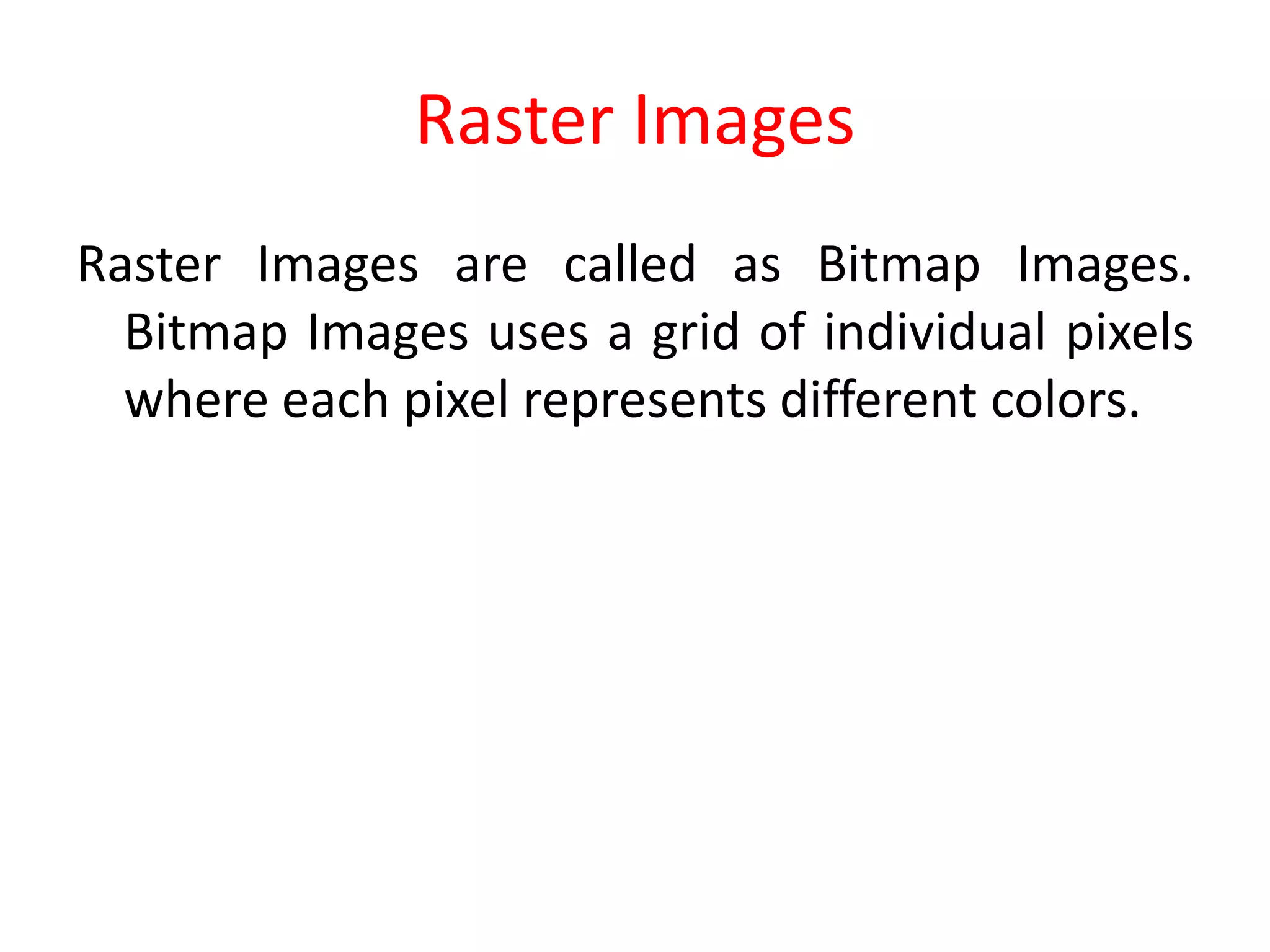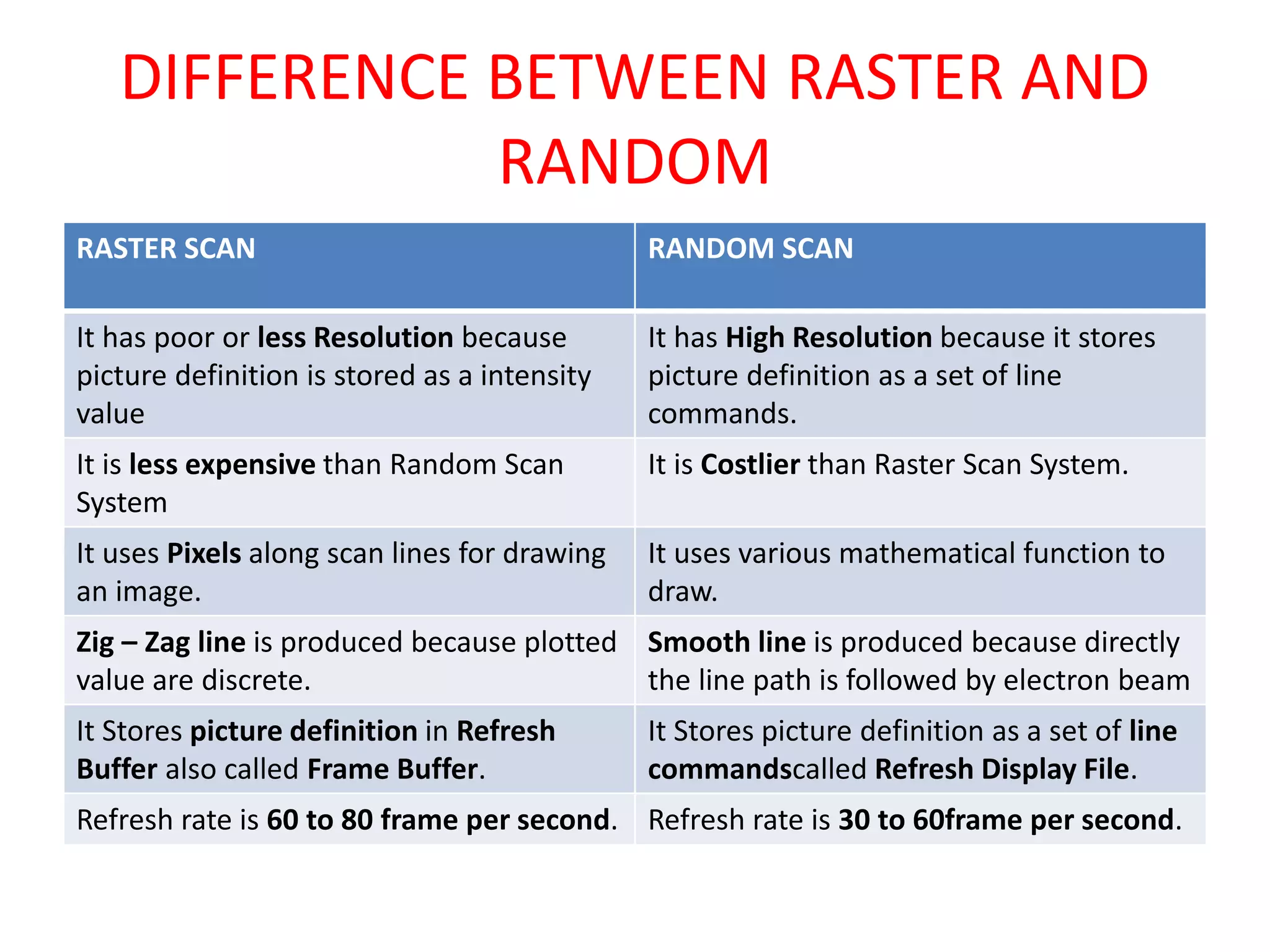This document discusses raster and random scan display technologies. It defines key concepts like pixels, aspect ratio, and frame buffers. Pixels make up raster images and are arranged in a grid, with more pixels providing higher resolution. A frame buffer is RAM that stores a bitmap driving a video display. Raster scan uses pixels along scan lines and has lower resolution but is less expensive than random scan, which uses mathematical equations to describe images and provides smoother lines but is more costly.
